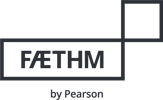The business case for workforce planning is obvious and irrefutable. But the question for many...
How to implement strategic workforce planning
Strategic workforce planning is a core function of Faethm, the world’s first AI platform for strategic workforce transformation. Strategic workforce planning with AI helps organizations predict which jobs and entire workforces will be affected by technological change, and which skill areas need to change to prepare.
What is workforce transformation? Workforce transformation refers to changes in an organization’s talent strategy that result from new technology. Artificial intelligence (AI), automation, robotics, and 3-D printing are all examples of new technologies that are reshaping workplaces across the globe. The scale of this change will be massive: research suggests that half of all work activities could be automated using existing technologies today.
Why is it important? New technology has always changed the nature of work; however, there has never been a time when so many roles have been under threat at once! The pace of change is now exponential; we have a unique opportunity to embrace technological change—and shape its impact on our employees and workplaces—rather than simply react to it as it happens. In fact, the World Economic Forum’s 2018 Future of Jobs report found that companies who proactively address impending technological disruption are three times more likely to improve their market share over their competitors in the same industry. These organizations also perform twice as well on average compared with their peers overall.
But how do you implement strategic workforce planning in your organization?
It starts with data from Faethm on how technologies are likely to transform specific roles, and how individual workers can learn new skills that will keep them relevant and employable in the future.
You can use this data to identify skill gaps in your workforce, craft a learning plan for each individual worker, and design training programs that will help workers up-skill and re-skill. All of these actions will help you prepare your workforce for the future of work.
Once you know what skill areas you need to focus on, you can start crafting a plan for training or retraining your employees. Developing a personal learning plan for each worker is key to success.
At Faethm, we’re using AI and machine learning tools to match workers to jobs that require specific skills and then providing the optimal personalized learning experience for those workers. The platform allows businesses to create a talent pipeline that focuses on up-skilling and cross-skilling their employees’ current capabilities based on AI-generated insights into the future workforce needs of their business.
By embedding this strategic workforce planning process into your people planning activities, businesses will be able to build a workforce that is ready for the new world of work – one that is collaborative, innovative and diverse.
Designing effective training programs means understanding your current skills base and where skill gaps lie in the organization, then understanding how those skill gaps intersect with how work is likely to change in the future.
If you don't have a clear view of the current skills base, it will be hard to develop effective learning programs tailored to your employees. Understanding the future skills base lets you design learning programs that address not just existing but also anticipated needs.
Many organizations begin by analyzing their workforce composition and structure. This analysis often includes taking a close look at employee demographics and categorizing them according to several criteria: for example, job family or level, length of tenure with the organization, educational background, age cohort and so on.
Training programs need to be focused on enabling workers up-skill and re-skill so they have the capabilities they will need in their future job – both technical skills and human capabilities like empathy, creativity and communication. Training programs should not focus on teaching employees specific tasks that are likely to become automated within five years.
Measure training program effectiveness
Too many companies do too little to measure the impact of their training programs.
- How many people take training? How often?
- Is it aligned with your strategic objectives and workforce plan?
- What is its impact on employee performance, engagement and retention?
- Are you able to track skill gaps and improve learning effectiveness as a result?
Create personal learning plans for each employee
One way to ensure that training is effective is by helping employees develop personalized learning plans based on their skillsets, strengths, learning preferences (e.g., collaborative vs. individual), career goals and skill requirements in the future jobs they want. These plans can then be integrated into overall talent management processes such as performance appraisals or promotions so that employees can see how their investment in developing new skills will benefit them over time.
In addition to hard analytical skills like data science or engineering, workplace learning needs a strong emphasis on soft skills such as communication, presentation, problem solving and storytelling. These capabilities are increasingly important as companies invest more in automation and connectivity.
Though they sometimes get overlooked, soft skills are the glue that holds an organization together. For example, if you work in a technology-focused role, you often need to present your ideas and convince people why it makes sense to implement them. If you're working on a team project with multiple stakeholders, then it's critical for everyone to have good communication and collaboration abilities. And even if you never interact directly with clients or customers (though most people do), the ability to use human interaction effectively will make your job easier overall because it helps build trust among colleagues.



%20(2).png?height=200&name=SWP%20Hero%20(1200%20x%20627%20px)%20(2).png)